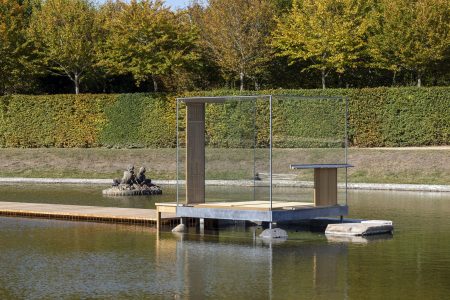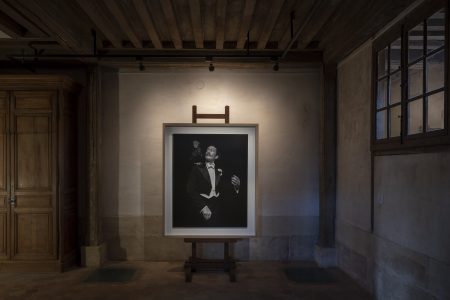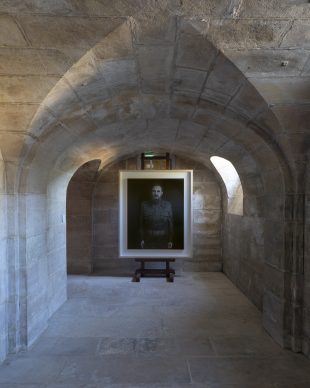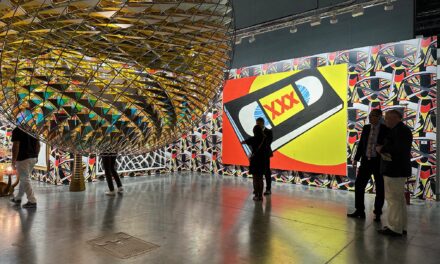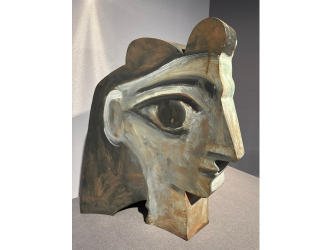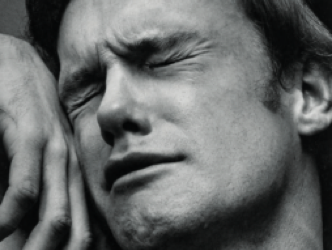As Jun‘ichiro Tanizaki explained back in 1933 (1) there is an ultra-refinement, even an ultra-aestheticization inherent in the familiar gestures of Japanese tradition.
This is currently being given masterful expression at the royal estate of Versailles, more specifically at the far end of the park in the play residence of Marie-Antoinette, the estate of Trianon.
It is here that the artist Hiroshi Sugimoto (born in 1948), also famous for being a star photographer, has constructed a piece of architecture in the form of a tea house. This work is a great aesthetic accomplishment.
Right in the middle of a forgotten body of water called the “bassin du plat-fond” (the “Flat Pool”), he has created a space in the form of an entirely transparent cube which is accessible (sadly not to visitors) by a long wooden walkway. This little glass house situated in aquatic surroundings with greenery on all sides was designed for the Venice Architecture Biennale four years ago, but here it finds an exceptional setting.
It is a large, abstract, geometric sculpture – Sugimoto explicitly references Mondrian – loaded with symbolism. “The tea ceremony, standardized by Sen no Rikyu in the 16th century, creates at once a space of intellectual freedom and apparent sparseness. It reminds me of the French revolution and its aspirations,” explains the artist, who sits cross-legged inside the tea house during our interview
More generally, he reveals that the guiding principle in all his work is time. “I am interested in the past”.
In the Petit Trianon chapel and what is known as the “French Pavilion”, at the end of darkened corridors and in the corners of small forgotten salons, he has installed various black and white portraits of his own. The majority of these were made at the Madame Tussauds waxworks museum in London.
Coincidentally the figures he has photographed all visited Versailles. “My photography work consists of creating a time machine. Here I’m summoning up the ghosts of past visitors,” he tells me, half joking, half serious.
The cast of figures includes Napoleon – “ But I prefer Louis XVI, he was more openminded and he supported the American revolution” –, Fidel Castro, Voltaire and Salvador Dali.
The exhibition opens with a portrait of Louis XIV taken from a wax portrait of the monarch that can be found at Versailles. It seems larger than life. Louis XIV resurrected by Sugimoto.
Hiroshi believes in black (and white) magic.
His work is well worth the visit to this slightly forgotten part of Versailles.
Until 17 February. www.chateaudeversailles.fr
(1) Louange de l’ombre (In Praise of Shadows). Editions Philippe Picquier.
Donating=Supporting

Support independent news on art.
Your contribution : Make a monthly commitment to support JB Reports or a one off contribution as and when you feel like it. Choose the option that suits you best.
Need to cancel a recurring donation? Please go here.
The donation is considered to be a subscription for a fee set by the donor and for a duration also set by the donor.



